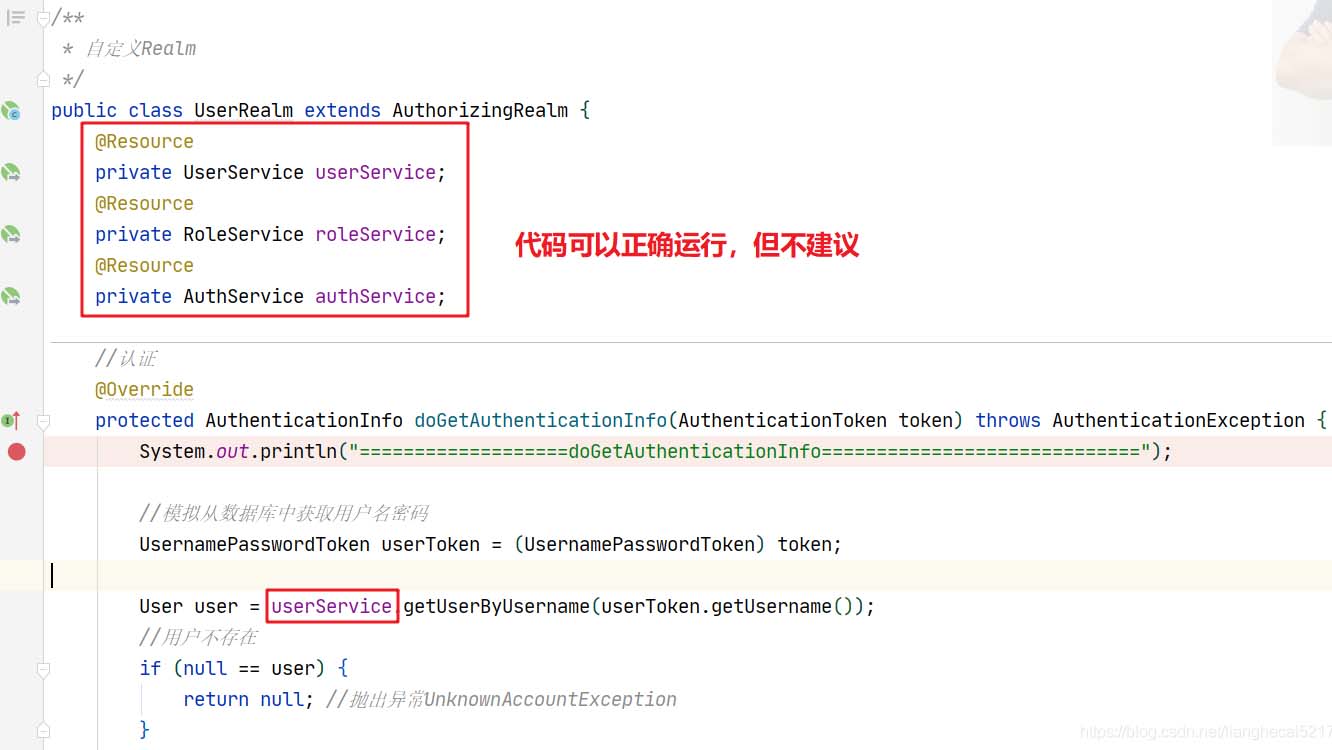SpringBoot如何使用ApplicationContext获取bean对象
目录
- 使用ApplicationContext获取bean对象
- SpringBoot Bean注入的深入研究
- 下面代码可正常运行
- 下面代码不能正常运行
- 比较
- 解决方案
- 应用
使用ApplicationContext获取bean对象
编写一个ApplicationContextFactory工厂类
public class ApplicationContextFactory{
private static ApplicationContext applicationContext = null;
public static void setApplicationContext(ApplicationContext applicationContext) throws BeansException {
applicationContext = applicationContext;
}
public static ApplicationContext getApplicationContext(){
return applicationContext;
}
}
在SpringBoot的启动类中设置ApplicationContext
public class Application {
public static void main(String[] args) {
ConfigurableApplicationContext app = SpringApplication.run(Application.class, args);
ApplicationContextFactory.setApplicationContext(app);
}
}
通过ApplicationContextFactory获取SpringApplication从而获取bean对象
ApplicationContext applicationContext=ApplicationContextFactory.getApplicationContext(); Clazz clazz = applicationContext.getBean(Clazz.class);
SpringBoot Bean注入的深入研究
下面代码可正常运行
DemoService
@Service
public class DemoService {
public void save(){
System.out.println("DemoService save");
}
}
CommonClass
@Component
public class CommonClass {
@Resource
private DemoService demoService;
public void fun(){
System.out.println("fun");
demoService.save();
}
}
Controller
@Resource
private CommonClass commonClass;
@ResponseBody
@GetMapping("/fun")
public void fun(){
commonClass.fun();
}
下面代码不能正常运行
DemoService
@Service
public class DemoService {
public void save(){
System.out.println("DemoService save");
}
}
CommonClass
public class CommonClass {
@Resource
private DemoService demoService;
public void fun(){
System.out.println("fun");
demoService.save();
}
}
Controller
@ResponseBody
@GetMapping("/fun")
public void fun(){
CommonClass commonClass = new CommonClass();
commonClass.fun();
}
比较
比较两个代码发现后者与前者的区别:因后者的CommonClass 没有使用@Component标注,所以在Controller中不能才用注入方式生成CommonClass对象,而是才用new的方式生成了该对象。
这样一来,CommonClass 对象是手工创建,所以在它内部注入DemoService 对象的代码就错误了。
解决方案
新建工具类
@Component
public class ApplicationContextUtil implements ApplicationContextAware {
private static ApplicationContext act;
@Override
public void setApplicationContext(ApplicationContext applicationContext) throws BeansException {
act = applicationContext;
}
/**
* 根据bean的名字获取工厂中对应的bean对象
* @param beanName
* @return
*/
public static Object getBean(String beanName){
return act.getBean(beanName);
}
}
注:实际测试发现上面代码中的static不能省略
DemoService
@Service
public class DemoService {
public void save(){
System.out.println("DemoService save");
}
}
CommonClass
public class CommonClass {
@Resource
private DemoService demoService;
public void fun(){
DemoService demoService = (DemoService) ApplicationContextUtil.getBean("demoService");
System.out.println("fun");
demoService.save();
}
}
此处不再采用注入的方式获取DemoService对象,而是通过工具类的方式
Controller
@ResponseBody
@GetMapping("/fun")
public void fun(){
CommonClass commonClass = new CommonClass();
commonClass.fun();
}
再次运行程序,一切正常
应用
在SpringBoot整合Shiro的案例中,自定义Realm时,需要使用Service的对象。因为自定义的Realm类不能使用@Component之类的注解注释,所以使用本案例介绍的方法是正确的解决方案。尽管在1.6.0的shiro-all中下面代码可以正确运行:

以上为个人经验,希望能给大家一个参考,也希望大家多多支持我们。
赞 (0)

